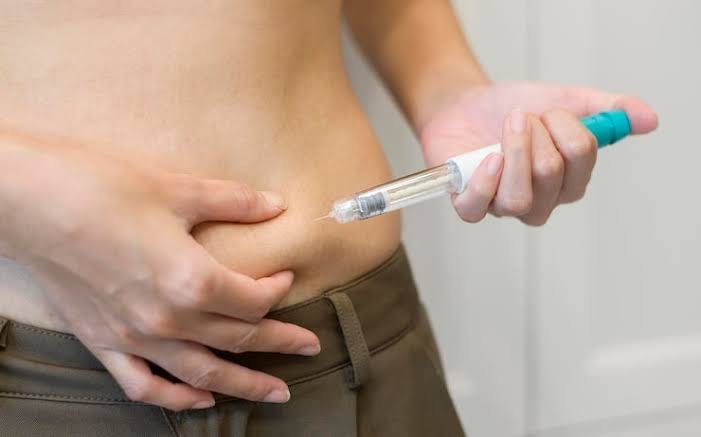The daily reality of over 75 million people worldwide who use insulin for diabetes management involves needle-based injections rather than convenient oral tablets. While medical science has developed oral medications for countless conditions, insulin remains stubbornly tied to injections, patches, and pumps. This fundamental limitation isn’t due to lack of research effort—scientists have been pursuing oral insulin delivery for over a century. The answer lies in the complex biological barriers that make oral insulin delivery one of medicine’s most challenging puzzles.
Table of Contents
- Understanding Insulin’s Molecular Structure
- The Harsh Journey Through Your Digestive System
- Why Stomach Acid Destroys Insulin
- Digestive Enzymes: Insulin’s Natural Enemies
- Absorption Challenges in the Intestinal Wall
- Current Injection Methods and Their Limitations
- Revolutionary Research in Oral Insulin Delivery
- Future Prospects for Needle-Free Insulin
- Expert Recommendations for Diabetic Patients
- Conclusion: The Road Ahead
Understanding Insulin’s Molecular Structure: Why Size and Composition Matter
Insulin is a complex peptide hormone consisting of 51 amino acids arranged in two distinct chains—the A chain with 21 amino acids and the B chain with 30 amino acids. With a molecular weight of approximately 5,800 Daltons, insulin represents a relatively large molecule that faces significant biological hurdles when taken orally.
The hormone’s intricate three-dimensional structure includes multiple disulfide bonds that maintain its functional shape. This sophisticated molecular architecture, while essential for insulin’s biological activity, makes it extremely vulnerable to the harsh chemical environment of the digestive system.
Unlike small-molecule drugs that can easily survive the digestive process, insulin’s peptide nature means it behaves more like the proteins in food you eat—subject to the same breakdown processes that digest dietary proteins into amino acids.
The Harsh Journey Through Your Digestive System
When you take any oral medication, it must survive a treacherous journey through your gastrointestinal tract. For insulin, this journey presents multiple insurmountable obstacles:
Stomach Acid: The First Barrier
Your stomach maintains an extremely acidic environment with pH levels between 1.0 and 2.5. This powerful acid serves essential digestive functions—breaking down food particles and killing harmful bacteria. However, this same acidic environment denatures insulin’s protein structure, essentially unfolding the hormone and destroying its biological activity.
The hydrochloric acid secreted by your stomach’s parietal cells creates conditions so harsh that most proteins cannot maintain their functional shape. For insulin, exposure to this acidic environment for even short periods results in irreversible structural damage.
Pepsin: The Protein-Destroying Enzyme
Even if insulin could somehow survive stomach acid, it faces another formidable enemy: pepsin, the stomach’s primary protein-digesting enzyme. Pepsin specifically targets peptide bonds, particularly those involving aromatic amino acids like phenylalanine, tryptophan, and tyrosine—amino acids present in insulin
Pepsin remains active in acidic conditions and efficiently breaks down insulin into smaller, biologically inactive peptide fragments. Research shows that pepsin can degrade substantial amounts of protein-based drugs within minutes of exposure.
Additional Digestive Enzymes: The Final Assault
If any insulin manages to escape the stomach intact, it encounters an army of additional protein-digesting enzymes in the small intestine:
- Trypsin and chymotrypsin from the pancreas
- Elastase and carboxypeptidases that target specific peptide bonds
- Aminopeptidases in the intestinal brush border
- Various proteolytic enzymes in the intestinal lumen
Each of these enzymes evolved specifically to break down dietary proteins into absorbable amino acids. For insulin, this means complete destruction of its biological activity long before it can reach the bloodstream.
Absorption Challenges: Why Even Protected Insulin Struggles
Suppose researchers could somehow protect insulin from digestive enzymes—the molecule would still face significant absorption challenges:
Molecular Size Limitations
The intestinal epithelium acts as a selective barrier, readily absorbing small molecules while blocking larger ones. Insulin’s molecular weight of 5,800 Daltons places it well above the typical size range for easy absorption. Most orally absorbed drugs have molecular weights under 500 Daltons.
Mucus Layer Barriers
The intestinal mucus layer presents another significant obstacle. This gel-like protective coating, renewed every 4-5 hours by goblet cells, selectively permits small molecules while hindering larger particles. Insulin’s size and charge characteristics make passage through this mucus layer extremely difficult.
Tight Junction Complexes
Intestinal epithelial cells are connected by tight junction proteins that prevent large molecules from passing between cells. While small molecules can sometimes squeeze through paracellular pathways, insulin’s size effectively blocks this route.
Low Bioavailability Reality
Even with the most advanced oral insulin formulations currently in development, bioavailability rarely exceeds 10-20%. This means that to achieve the same therapeutic effect as injected insulin, oral formulations would require dramatically higher doses—often 20-50 times more insulin.
Current Injection Methods: Understanding the Standard Approach
Given the impossibility of effective oral delivery, insulin administration relies on several injection-based methods:
Subcutaneous Injections
The most common route involves subcutaneous injection using syringes, insulin pens, or insulin pumps. This method delivers insulin directly into the fatty tissue beneath the skin, bypassing the digestive system entirely.
Benefits include:
- Predictable absorption rates
- Dose accuracy
- Immediate bioavailability
- Well-established safety profile
Challenges include:
- Injection site reactions
- Risk of lipodystrophy
- Patient compliance issues
- Psychological barriers to injection
Alternative Delivery Methods
Researchers have explored various non-oral routes including:
- Intravenous delivery for emergency situations
- Intramuscular injection using concentrated formulations
- Inhalable insulin approved by the FDA in 2014
- Transdermal patches under development
- Intranasal delivery systems
Each alternative method attempts to bypass the digestive system while maintaining insulin’s biological activity.
Revolutionary Research: The Quest for Oral Insulin Continues
Despite the formidable challenges, researchers worldwide continue pursuing oral insulin delivery through innovative approaches:
Enteric Coating Technology
Enteric-coated capsules protect insulin from stomach acid by using pH-sensitive polymers like Eudragit that dissolve only in the higher pH environment of the small intestine. This technology has shown promising results in animal studies, with some formulations achieving relative bioavailability of 20% or higher.
Nanotechnology Solutions
Cutting-edge nanoparticle delivery systems encapsulate insulin in protective carriers that shield it from digestive enzymes while enhancing intestinal absorption. Recent breakthroughs include:
- Smart nanocarriers that release insulin only when blood glucose levels are elevated
- Lipid-based nanoparticles that improve intestinal permeability
- Chitosan-based microspheres that protect against enzymatic degradation
Permeation Enhancers
Researchers have identified compounds that temporarily increase intestinal permeability to facilitate insulin absorption:
- Sodium glycocholate and bile salts that open tight junctions
- Protease inhibitors like aprotinin that reduce enzymatic degradation
- Cell-penetrating peptides that guide insulin across cellular barriers
Recent Clinical Developments
ORMD-0801, developed by Oramed Pharmaceuticals, became the first oral insulin to reach Phase 3 clinical trials. However, the formulation failed to demonstrate significant efficacy compared to placebo in 2024, highlighting the persistent challenges in oral insulin development.
More promising is recent research from the University of Sydney, which developed nanotechnology-based oral insulin achieving 51% bioavailability in animal studies—a substantial improvement over previous attempts.
Current Problems with Insulin Injections: Why Oral Delivery Matters
Understanding why oral insulin delivery remains such a priority requires recognizing the significant limitations of current injection methods:
Patient Compliance Issues
Studies show that up to 31% of diabetes patients struggle with proper insulin administration. Common errors include:
Physical and Psychological Barriers
Daily injections create substantial quality-of-life challenges:
- Fear of needles affecting treatment adherence
- Social stigma around public injections
- Pain and discomfort at injection sites
- Development of lipodystrophy and scar tissue
Side Effects and Complications
Injection-related complications include:
- Hypoglycemic episodes from dosing errors
- Injection site infections
- Allergic reactions to insulin formulations
- Weight gain and fluid retention
Expert Recommendations for Current Diabetes Management
While waiting for oral insulin breakthroughs, diabetes specialists recommend several strategies for optimizing current injection-based therapy:
Proper Injection Technique
Healthcare providers emphasize the importance of:
- Regular rotation of injection sites
- Using room-temperature insulin
- Proper needle disposal and hygiene
- Accurate dose measurement and timing
Technology Integration
Modern diabetes management increasingly relies on:
- Continuous glucose monitoring systems
- Smart insulin pens with dose tracking
- Insulin pump therapy for eligible patients
- Mobile apps for glucose and insulin logging
Patient Education
Comprehensive diabetes education programs focusing on:
- Understanding insulin action profiles
- Recognizing and treating hypoglycemia
- Carbohydrate counting for dose adjustment
- Long-term complication prevention
Future Prospects: When Will Oral Insulin Become Reality?
The pursuit of oral insulin delivery continues with renewed vigor, driven by technological advances and deeper understanding of biological barriers:
Promising Technologies on the Horizon
Several approaches show particular promise:
- Sublingual insulin drops using cell-penetrating peptides for under-tongue absorption
- Glucose-responsive smart insulins that activate only when blood sugar rises
- Advanced nanoparticle systems with improved bioavailability and stability
- Combination approaches using multiple protective strategies simultaneously
Timeline and Challenges
Industry experts suggest that effective oral insulin may become available within the next 5-10 years, though significant hurdles remain. Key challenges include:
- Scaling manufacturing of complex nanoformulations
- Demonstrating long-term safety in human populations
- Achieving cost-effective production for global accessibility
- Regulatory approval for novel delivery technologies
The Role of Personalized Medicine
Future oral insulin development may focus on:
- Customized formulations for individual patient needs
- Combination therapies targeting multiple absorption pathways
- Integration with continuous glucose monitoring for automated dosing
- Development of multiple oral insulin types for different therapeutic needs
Conclusion: The Science Behind the Needle
The inability to take insulin orally stems from fundamental biological realities—the hormone’s complex protein structure makes it extremely vulnerable to the digestive processes that efficiently break down dietary proteins. Stomach acid, digestive enzymes, and absorption barriers combine to create an nearly insurmountable challenge for oral insulin delivery.
While researchers continue making impressive strides in nanotechnology, enteric coatings, and permeation enhancers, oral insulin remains a goal rather than a reality for most patients. Current injection-based methods, despite their limitations, remain the gold standard for insulin delivery due to their reliability, predictability, and proven safety record.
For the millions of people living with diabetes, the future holds promise for more convenient insulin delivery methods. Until then, working closely with healthcare providers to optimize current injection techniques and embracing available technologies can significantly improve both treatment outcomes and quality of life.
The journey toward oral insulin continues, driven by the fundamental understanding that overcoming the biological barriers preventing oral delivery could transform diabetes care worldwide. Science may not have solved this puzzle yet, but the dedicated research efforts ensure that the goal remains achievable—bringing us closer to a needle-free future for diabetes management.

